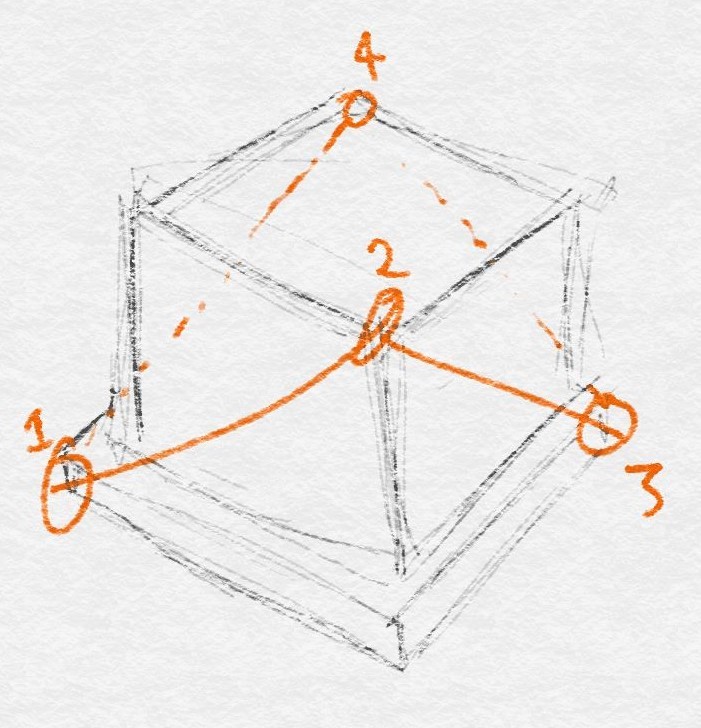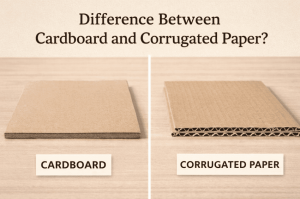In our last post on How to Save on Buying Pallet Wrap in Bulk, we looked at reasons why every business should be using pallet wrap to save money – both in terms of less upfront costs and also in terms of the potentially devastating back-end costs.
In this post, we will review common mistakes when wrapping a pallet and how to properly secure pallets for shipment.
Improper pallet wrapping
To wrap your orders effectively to reduce shipping damage, costs, and liability, it’s important to first know what not to do. Putting the disaster scenarios from the last post aside, the more common expense is from shipping damage due to items moving or falling off the pallet during shipment.
Shipping damage often happens when loose boxes or products are not wrapped properly.
Improper wrapping can be a major concern, one of my clients who sells large heavy rolls of industrial fabric has had to reconsider his shipping partner after having many of his customers complain that their orders where arriving with rolls thrown across the trailer floor.
The issue wasn’t that the shipping partner wasn’t using pallet wrap, it was that there were not using it correctly to contain the rolls.
Here’s the most common mistakes of incorrectly pallet wrapping:
- Loosely packing a shipment. If the items are not packed tightly before shipment, you can count on them shifting during shipment. In this case, it doesn’t matter how well wrapped or how tightly stretched the pallet wrap is. If the palletized items have gaps between them, those gaps will allow items to shift inwards during shipment and this will make the pallet unstable. A related issue is incorrectly staking a load. Stacking a load takes a bit of foresight and understanding of physics. For instance, a shipment of rolls should be cross-hatched rather than stacked all in the same direction. Or a mixed shipment should have the looser heaver more stable Essentially, this creates the same dangerous situation that we find in #2.
- Not stretching the wrapping tight enough. Pallet wrap must be stretched tight as drum. If the wrap is put on loosely (read: not stretched tightly enough), the items will begin to shift outwards during shipment and create an insecure load. A pallet wrap dispenser with a tightly calibrated tensioner helps to resolve this issue, yet it’s not fool-proof as we will see in the next steps.
- Not anchoring the load to the pallet. Anchoring products to a pallet is an often-skipped step yet it can easily lead to items shifting off a palate during transport – especially due to wild forklift rides where the operator believes the pallet is more secure than it actually is. The reason why this step is skipped is because it takes a lot of conscious effort and work. You need to get down very low with the wrap dispenser to ensure the bottom corners of the pallet are wrapped and bring the wrap up to the upper corners of the stack to ensure the load is firmly secured to the pallet. This requires going around the pallet multiple times in a bottom-to-top, top-to-bottom cross-hatched pattern. It’s dizzying and takes a lot of effort.
- Inconsistent tension. If the wrap is too loose or too tight, it can compromise the containment of the load. Too tight and the wrap might rip. Too loose, specific pressure points can also lead to instability. Some shippers and warehouses don’t use wrap dispensers and this can easily lead to the film being inconsistently stretched. The benefit from having a tight tensioner set is that it helps to ensure the same amount of force is applied across the whole wrapping process. Yet a tight tensioner also means a lot of effort is required to wrap the pallet. It takes some effort to stretch the pallet wrap by hand, even with a dispenser.
- Sparse, inconsistent coverage. To apply pallet, wrap securely to contain a heavy load for long distance shipments, it’s necessary to wrap several times around the entire bundle – going over the same areas several times. A single wrap may work in principle, however it’s easy to leave weak points where the coverage is missing or where wrap could tear or stretch out over time. Having multiple layers provides redundancy and ensures full coverage to protect from punctures, rips, tear, and overall containment.
How to Properly Wrap a Pallet
- Use a pallet wrap dispenser with tensioner and calibrate the tensioner so it stretches the film firmly as the wrap is dispensed. You want the film tight and secure but not pressing the limit of tearing.

- Anchor the film first by pulling a foot or more out by hand and tying it to the pallet by hand. Then use the wrap dispenser to walk the wrap around the base of the pallet several times. The aim here is to secure the load to the pallet.
- Walk the pallet wrap dispenser around the palletized items, starting at the bottom moving slowly to the top. Be sure to overlap ea lap by about half the width of the film.
- Criss-cross the wrap from lower corners to adjacent upper corners for several laps – as shown in the diagram on the right.
- Keep overlapping to build-in redundancy and to protect against rips and tears and abrasions as well as g-forces.
Overall a general rule here is that you want to overdo it a little. The cost of overusing pallet wrap is lower than the potential cost of under using it.
Buy your Pallet Wrap Wholesale in Richmond BC
If you are looking to save on your Pallet Wrap purchases, you can buy your wrap wholesale (at 4 rolls per case) from Racer Printing and Box Manufacturing in Vancouver BC.
To place an order, call us today at (604) 270 – 8205.





Recent Comments